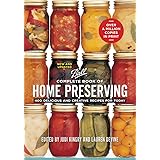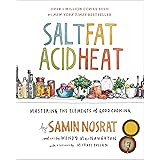The environmental impacts of our dietary choices represent a profound challenge, with animal agriculture emerging as a significant, often underestimated, contributor to global ecological strain. Recent data reveals that if global populations shifted entirely from fossil fuels, the environmental benefits would manifest over a century, yet a worldwide adoption of veganism could yield comparable effects within mere decades. This compelling insight, highlighted by environmental professor Kirk R. Smith in the documentary *Cowspiracy*, underscores the immediate and transformative potential embedded in our plates. As Christian Hextrum passionately discusses in the accompanying video, the pervasive myth of animal agriculture’s minor role in environmental degradation requires urgent debunking.
Contrary to popular belief, where industrial smokestacks and vehicle exhausts dominate images of pollution, animal agriculture is in fact responsible for a staggering 51% of all global greenhouse gas emissions. This astonishing figure positions it as the single largest anthropogenic source, dwarfing the combined impact of all transportation sectors. Understanding the mechanics behind this colossal footprint is crucial for grasping the full scale of the ecological dilemma facing humanity today. The pervasive nature of these emissions requires a deep dive into specific greenhouse gases and their unique, potent effects on our delicate atmosphere.
The Overlooked Contribution of Animal Agriculture to Greenhouse Gases
1. The sheer volume of livestock across the globe contributes immensely to atmospheric pollution through enteric fermentation and manure management. Billions of animals collectively produce an unfathomable amount of waste, with the United States alone witnessing approximately seven million pounds of excrement generated every minute. This constant output introduces various harmful compounds into the environment, far beyond simple organic matter. The scale of this biological waste stream necessitates innovative management solutions that are currently lacking in industrial farming models.
Within this deluge of animal waste, nitrous oxide emerges as an especially insidious threat to our planetary health. Although it constitutes only 5% of total greenhouse gas emissions, its destructive capacity is nearly 300 times greater than that of carbon dioxide over a 100-year timescale. The potency of nitrous oxide means even small quantities can significantly exacerbate the warming effect, making its widespread release from agricultural run-off a critical concern. Addressing this aspect of livestock emissions is paramount for any meaningful climate action strategy moving forward.
The Enormous Water Footprint of Livestock Production
2. Water scarcity remains a pressing global issue, and the allocation of fresh water resources profoundly impacts both human communities and natural ecosystems. While domestic uses like showering and laundry account for only 5% of water consumption in the United States, a colossal 55% of the nation’s fresh water is diverted to animal agriculture. This disproportionate usage is not merely for the animals’ direct hydration; it also includes the immense quantities required to grow the crops that feed them. John Robbins’ research in *The Diet for a New America* vividly illustrates this resource-intensive reality.
The global statistics paint an even starker picture, revealing that one-third of Earth’s entire freshwater supply is dedicated to sustaining the livestock industry. This massive withdrawal of a finite resource places immense stress on aquifers, rivers, and lakes, particularly in drought-prone regions. Considering the efficiency disparity, where plant-based food production requires significantly less water per calorie, the current model of meat production represents an unsustainable paradigm. Adopting more water-efficient food systems becomes a non-negotiable step toward ensuring water security for future generations.
Deforestation and Land Use: A Relentless Conversion of Ecosystems
3. Earth’s rainforests function as vital planetary lungs, diligently absorbing carbon dioxide and releasing life-giving oxygen, alongside harboring incredible biodiversity. Alarmingly, an acre of rainforest is obliterated every second, with animal agriculture standing as the dominant driver behind this relentless deforestation. The sheer demand for grazing land and for cultivating monoculture feed crops necessitates the clearing of vast natural habitats, pushing countless species towards extinction. This ecological destruction has far-reaching consequences, impacting global weather patterns and local climate resilience.
In the Amazon basin, the problem is particularly acute, with animal agriculture responsible for a staggering 91% of its destruction. This relentless conversion of primary forests into pastureland or soy plantations for livestock feed represents an ecological catastrophe. The long-term implications for carbon sequestration, indigenous communities, and biodiversity are dire, emphasizing the urgent need for a paradigm shift in our land use practices. Reversing this trend requires re-evaluating our food production priorities and embracing more land-efficient dietary patterns.
Consider the stark comparison in land efficiency: a single acre of land can yield approximately 37,000 pounds of plant-based food, yet that same acre will produce only about 375 pounds of meat. This immense disparity illustrates the profound resource inefficiency inherent in meat production. For an individual vegan, a mere one-sixth of an acre could supply their food needs for an entire year. In contrast, a meat-eater would require 18 times that amount of land, highlighting the profound ecological savings offered by a plant-centric diet. Such comparisons effectively illustrate the leverage points available for sustainable food choices.
Addressing Global Food Insecurity Through Resource Reallocation
4. The paradox of global hunger existing alongside abundant food production is a humanitarian crisis fueled by systemic inefficiencies. Currently, the world produces enough food to feed 10 billion people, comfortably exceeding the current global population of approximately seven billion. However, this abundance is tragically misallocated, with a significant portion of staple crops diverted away from direct human consumption. The livestock industry plays a central role in this misallocation, consuming resources that could otherwise alleviate widespread food insecurity.
Approximately 50% of all grains produced worldwide are fed to animals within the industrial agriculture complex, rather than being used to nourish starving human populations. This represents a monumental caloric and nutritional loss as feed conversion ratios are highly inefficient. Furthermore, the irony deepens when we consider that 82% of children suffering from starvation live in communities adjacent to these livestock farms, where animals are raised for export to wealthier nations like the United States, the UK, and Europe. This stark geographical and economic disconnect reveals a profound ethical and logistical failure in our global food system.
To put the scale into perspective, humans globally consume about 21 billion pounds of food annually. In stark contrast, the world’s 1.5 billion cows alone devour an astonishing 135 billion pounds of food each year. This comparison effectively illustrates the enormous resource drain that large-scale animal agriculture imposes on global food reserves. Reorienting these vast quantities of grains and other feed crops directly for human consumption could fundamentally transform the landscape of global food security, offering a tangible solution to persistent hunger. A shift towards less reliance on animal products holds substantial promise for rebalancing our strained planetary resources.
The compelling data and profound ecological implications present a clear imperative for change. While a complete transition to veganism might seem daunting to some, the pathway towards a more sustainable future begins with informed choices and conscious reductions. Embracing plant-based alternatives and simply opting for meat and animal products less often can collectively create a powerful ripple effect. As the accompanying video thoughtfully suggests, the choice to support our world through dietary adjustments is not just an act of personal responsibility, but a crucial step towards global ecological equilibrium. Prioritizing plant-based options in our daily meals contributes directly to mitigating greenhouse gas emissions, conserving precious water, preserving vital rainforests, and fostering greater food security for all.











